How to Share Computer Audio #
To ensure Transync AI can translate every participant in your meeting, you need to share your computer’s system audio. This allows Transync AI to capture voices not only from your microphone but also from Zoom, Teams, or Google Meet.You can visit our official website to learn more.
1. Enable “Computer Audio” in Transync AI #
Before you start translation, open the Transync AI app and check “Computer Audio.”
This ensures meeting sound is captured directly from your device for translation.
For the computer client (MacOS,Win) #
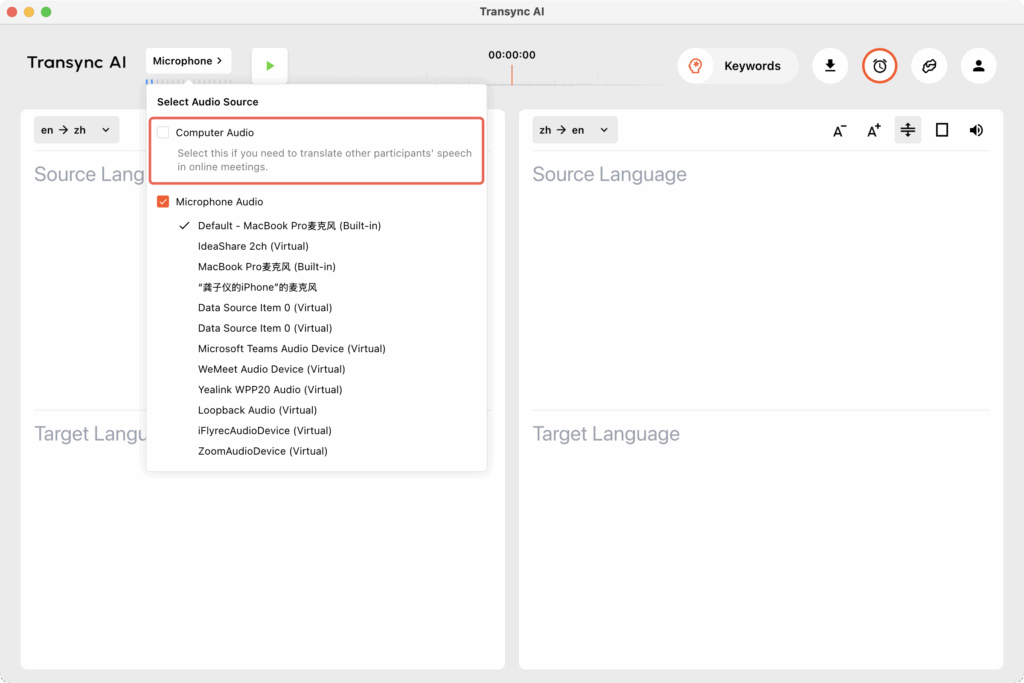
For the web app #
The web version only supports sharing the sound from browser tabs, so if you need to capture audio from videos or conferencing software, please ensure that the video and conferencing software are also using the web version. Click on the corresponding tab and select “Share computer sound simultaneously.”
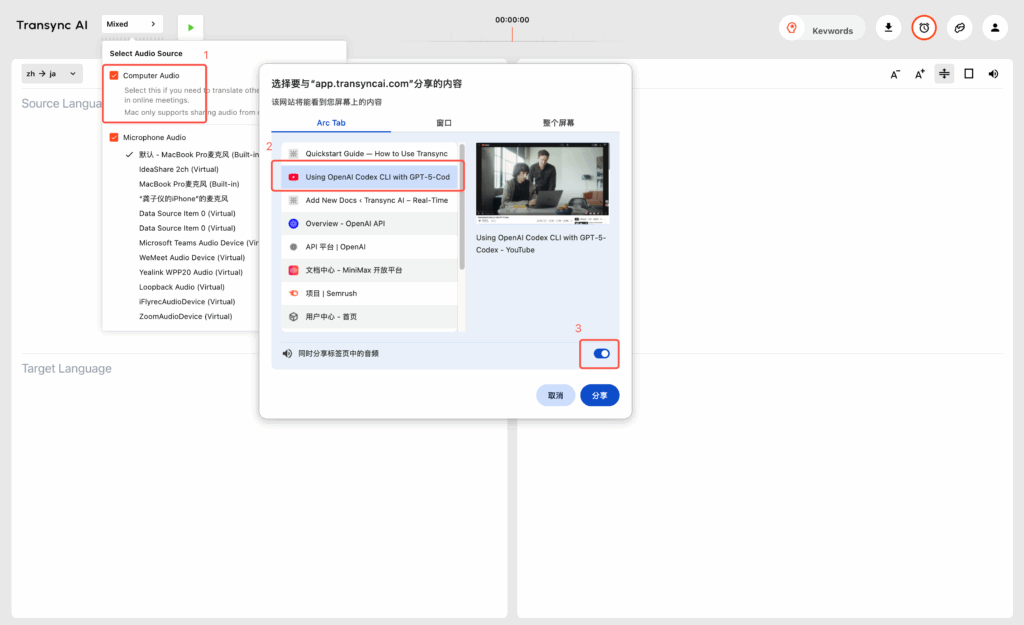
For mobile client applications #
Currently, we do not support sharing mobile audio. For some phones, using the small window mode can directly access the phone’s audio.
2. Share Audio in Your Meeting Platform #
Turn on the voice broadcast #
First, turn on the voice broadcast switch for the language you want to announce. If you wish to translate and broadcast in Japanese, then on the en->ja side, turn on the language broadcast and select your preferred voice tone.

Generally speaking, you only need to use the computer speakers for others in the meeting to hear the language broadcast.
Share voice announcements in the meeting software (optional) #
If you must use headphones, or if even with the speaker on others in the meeting cannot hear the language broadcast, you need to enable screen sharing in the meeting software and share audio as well.
Depending on your video conferencing tool, make sure to share both your screen and audio:
- Microsoft Teams: Click Share Screen, then toggle “Include Computer Sound.”
- Zoom: In the Share Screen dialog, check “Share Sound.”
- Google Meet: Select “Present Now → A Tab”, then enable “Share Tab Audio.”
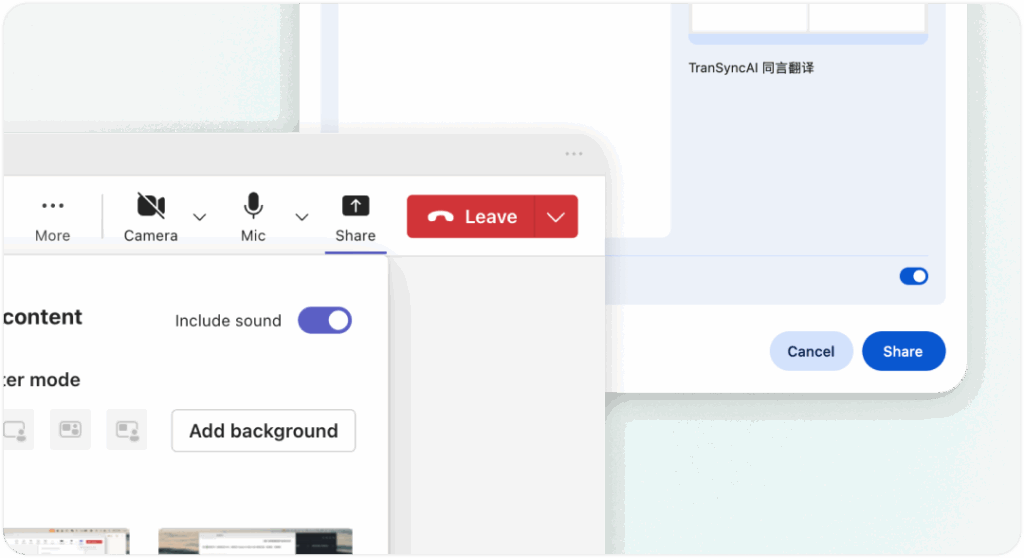
3. Adjust System Volume or echo #
Ensure your computer’s sound output is not muted and that the volume is moderate.
If there is an echo during speaking and voice broadcasting, we strongly recommend that you only enable voice broadcasting on one side. Learn more about the features of voice translation.
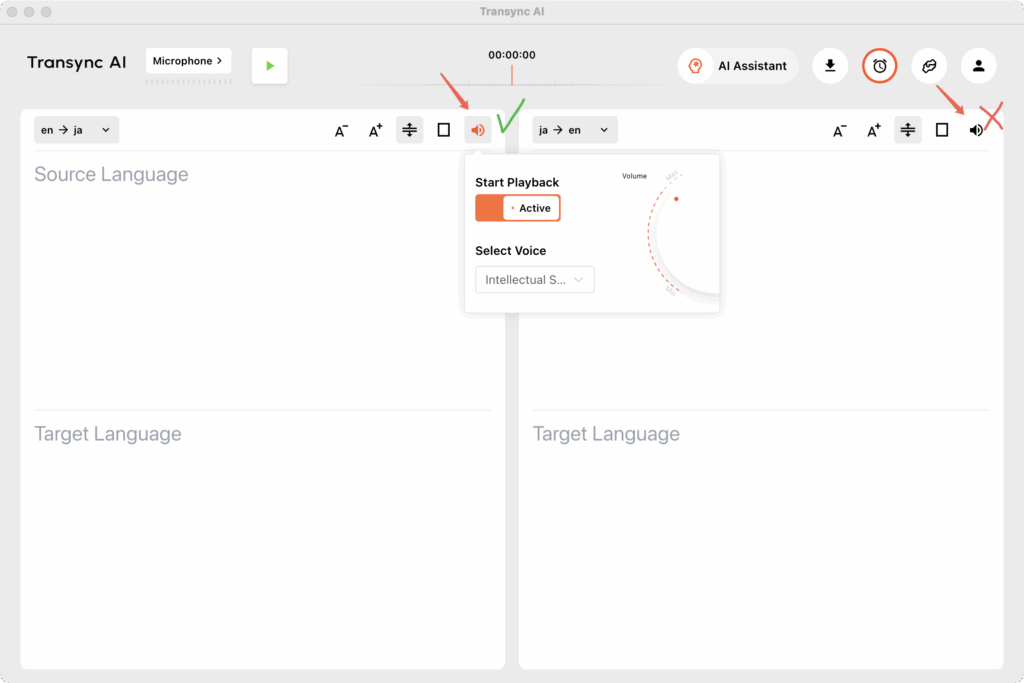
4. Start translating #
You can check if the microphone is working in Transync AI. Generally, if Transync AI can receive sound from the microphone, there will be a blue square fluctuating under the microphone selection button.
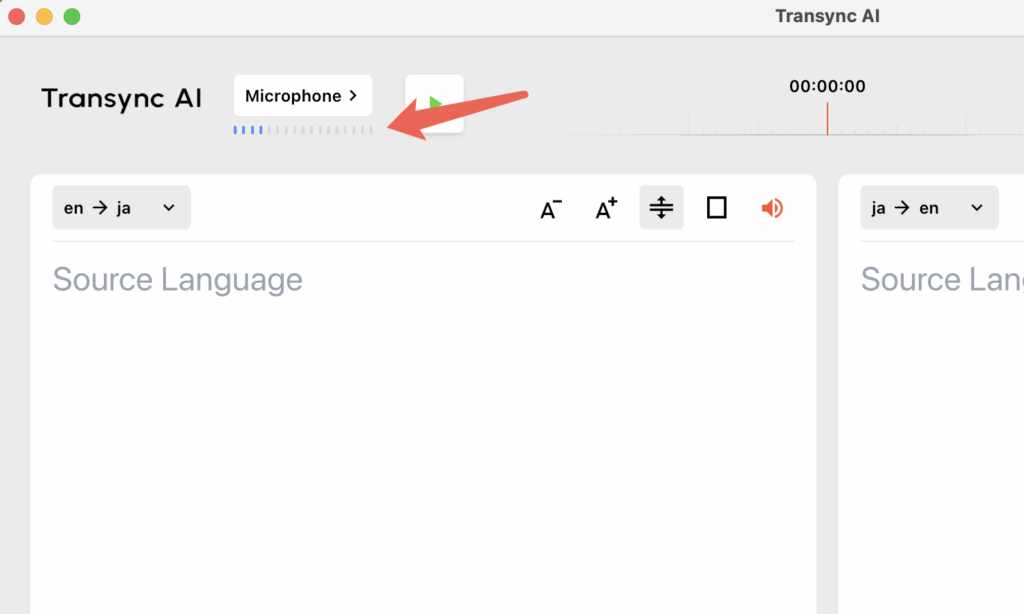
You can start translating after the computer audio has been shared and the language pair has been confirmed.
5. Troubleshooting #
If you are unable to access the microphone or computer audio, we can confirm the audio settings step by step. Please follow the steps below.
For Windows client #
Select the sound button in the lower right corner of the computer’s taskbar to check the sound settings. or (win+ctrl+v)
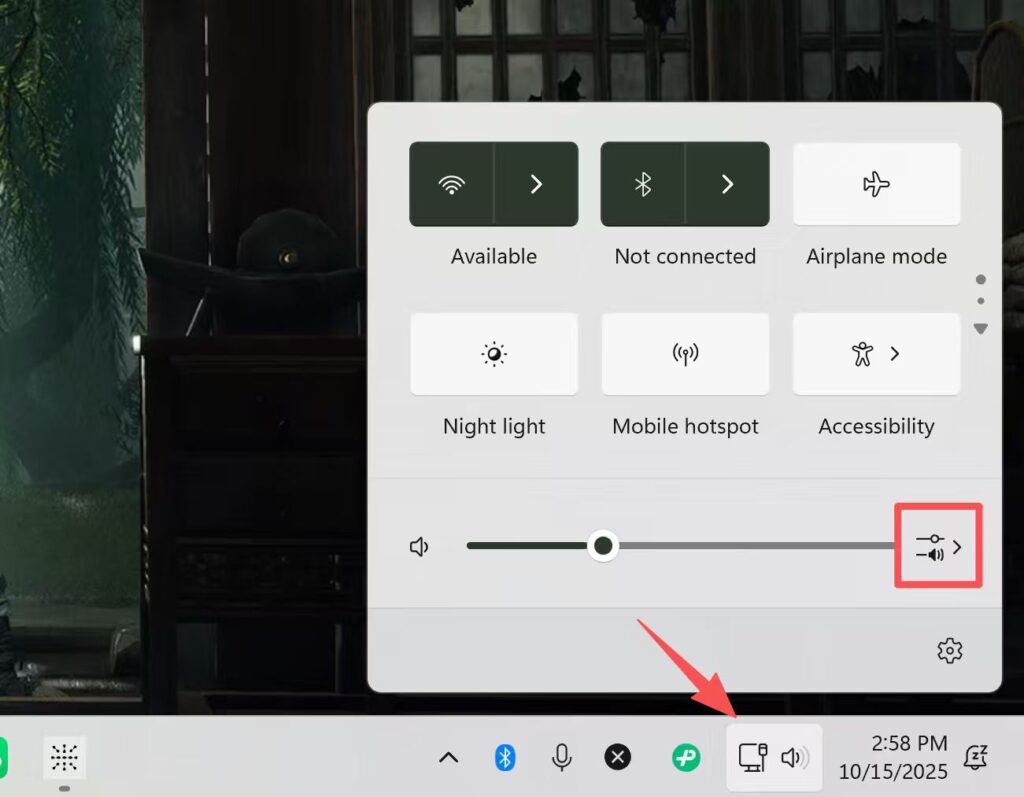
Click for more volume settings.
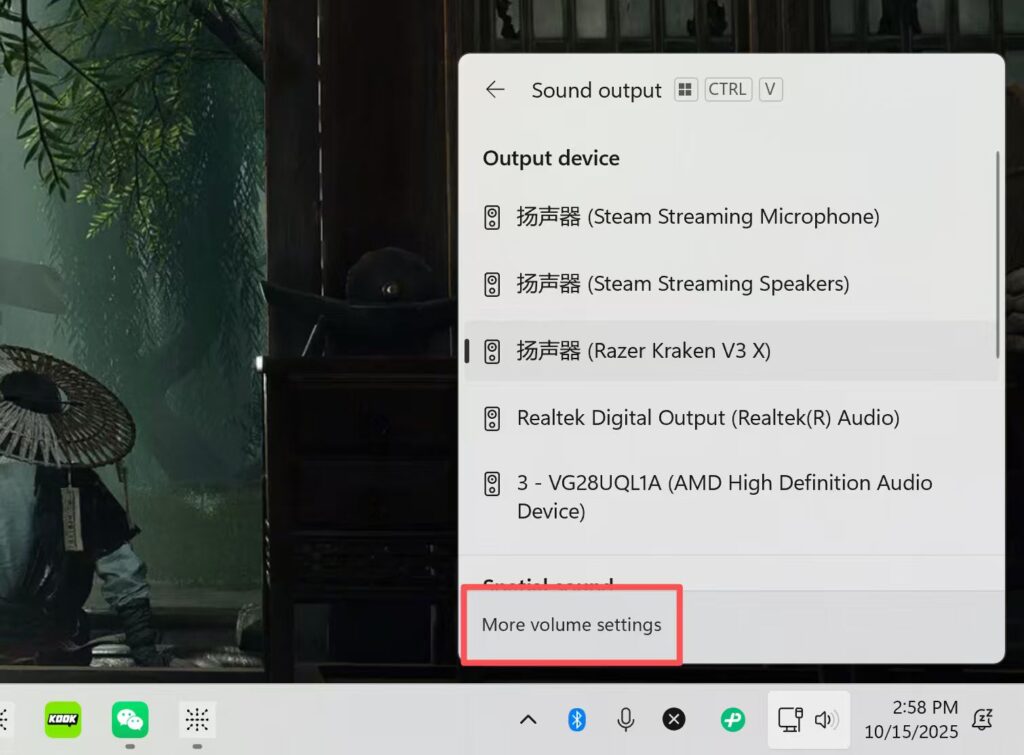
Make sure the device selected in the output is the one you are currently using, such as speakers or headphones.Make sure the slider at Volume fluctuates when there is sound.
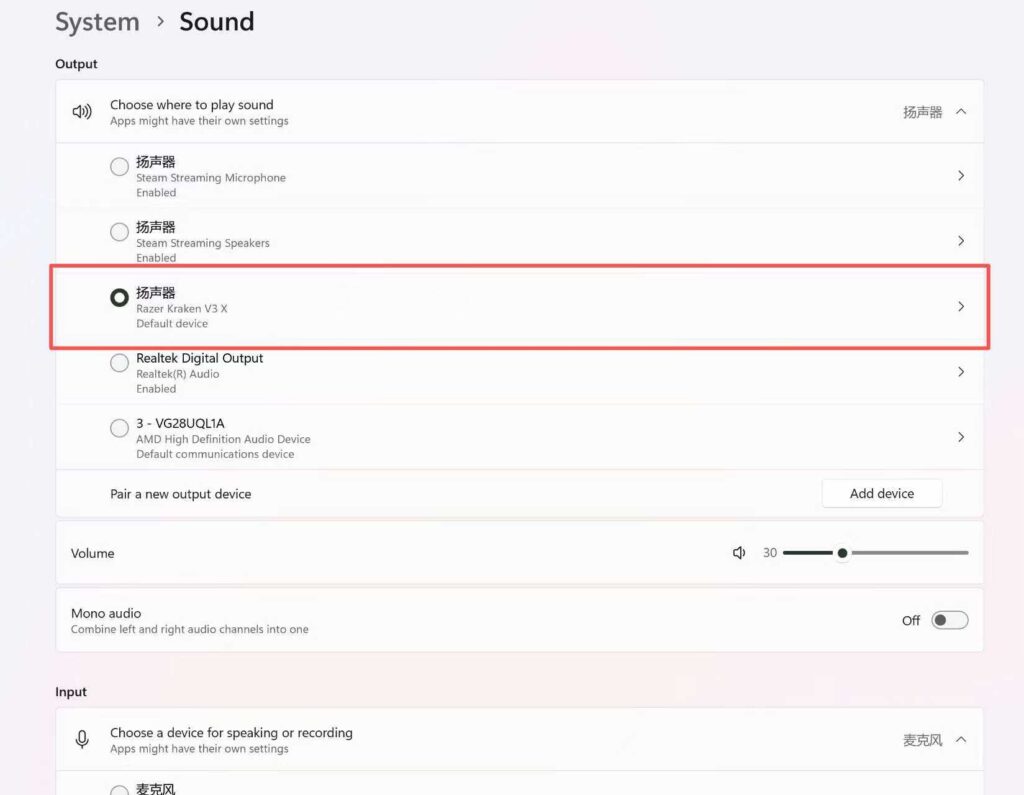
Make sure the device selected in the input is the one you are currently using, such as a speaker or headphones.Make sure the slider at Volume fluctuates when there is sound.
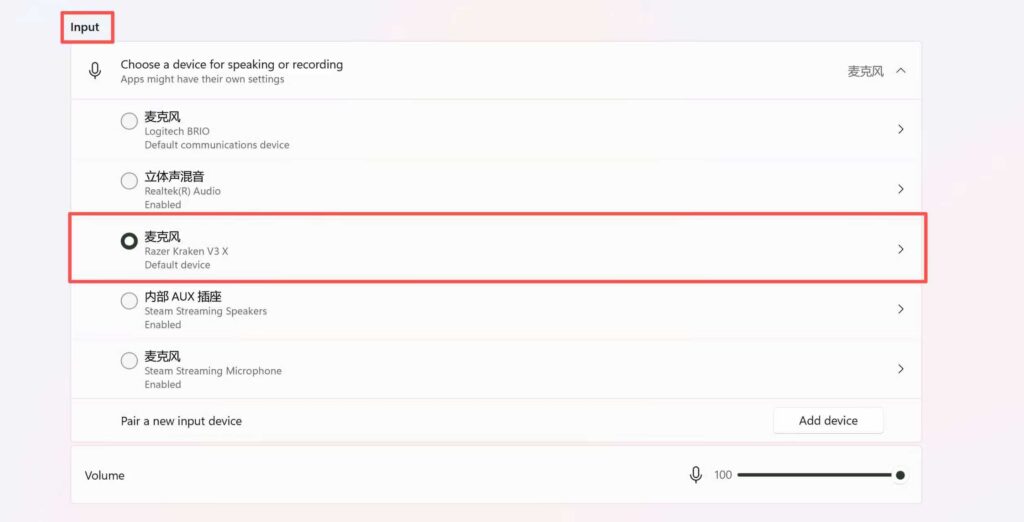
Important: Ensure that the microphone in Transync AI matches the input settings in your computer’s audio settings.
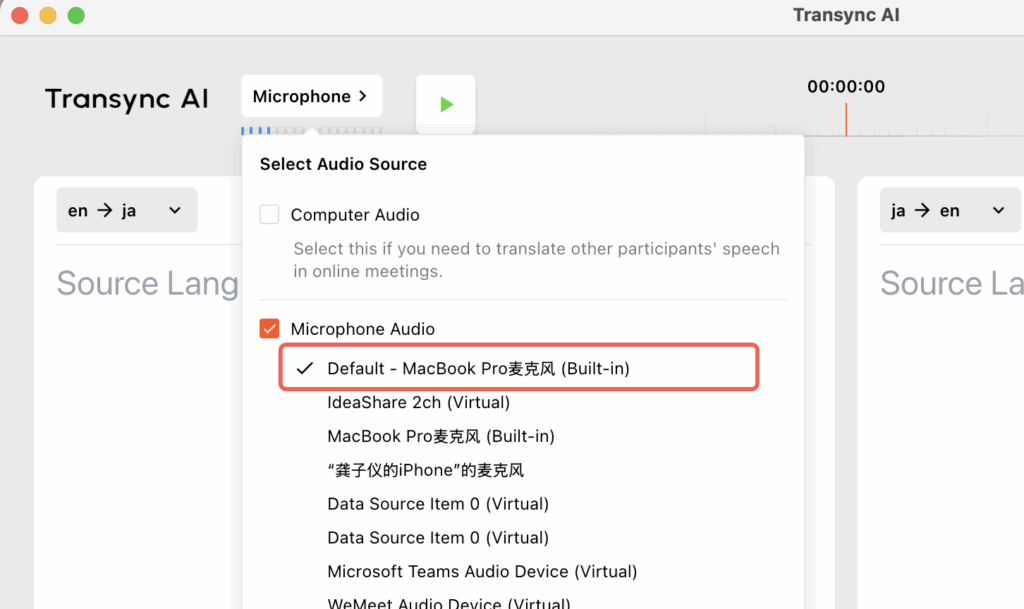
For MacOS #
Open the computer settings and select Sound. Check if the Output and Input match your expectations, and make sure that the volume slider fluctuates when you speak.
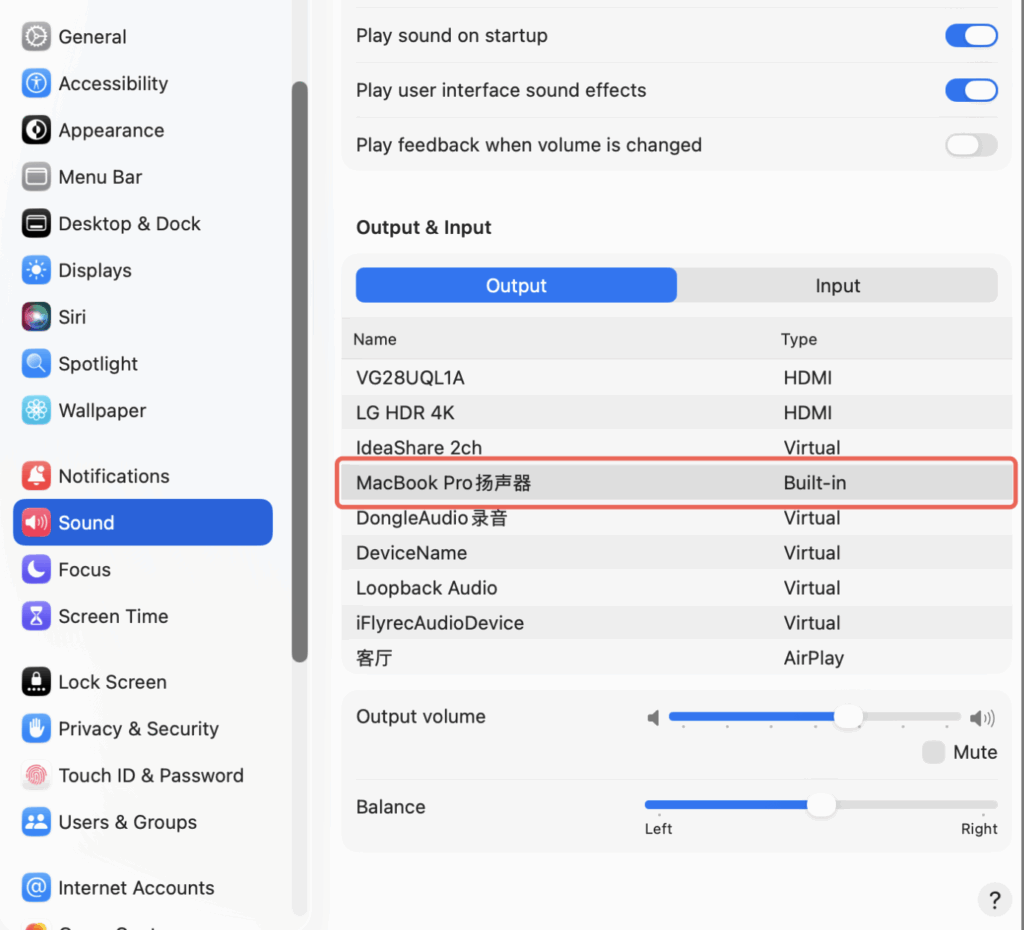
If you are wearing headphones, please check whether the input and output match your expected devices.
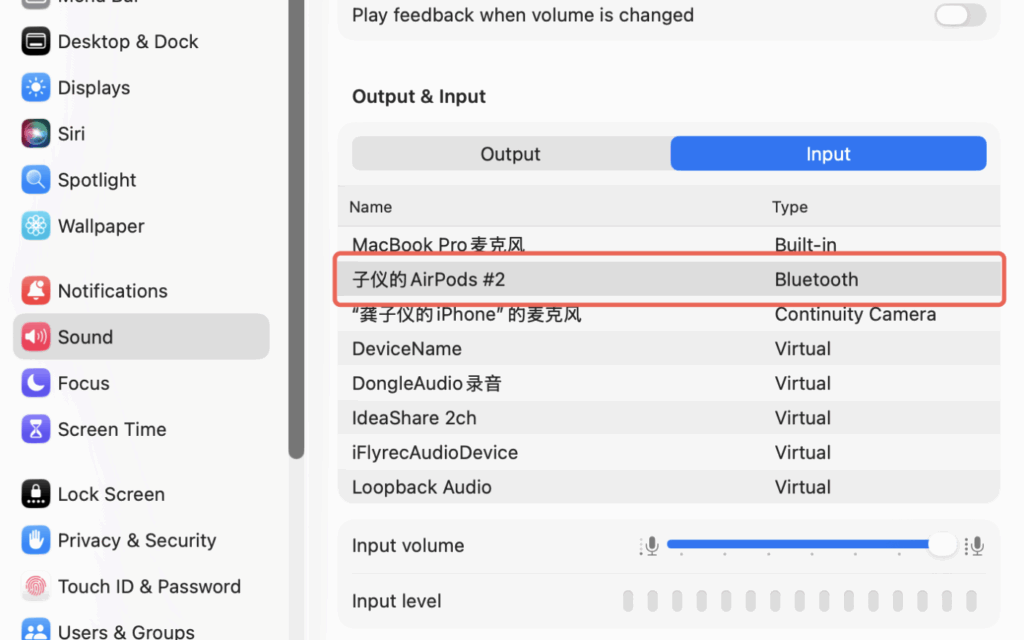
Please make sure that the input and output options in your computer’s sound settings match those selected in Transync AI. If you do not see your headphones or other devices here, please close and restart Transync AI.
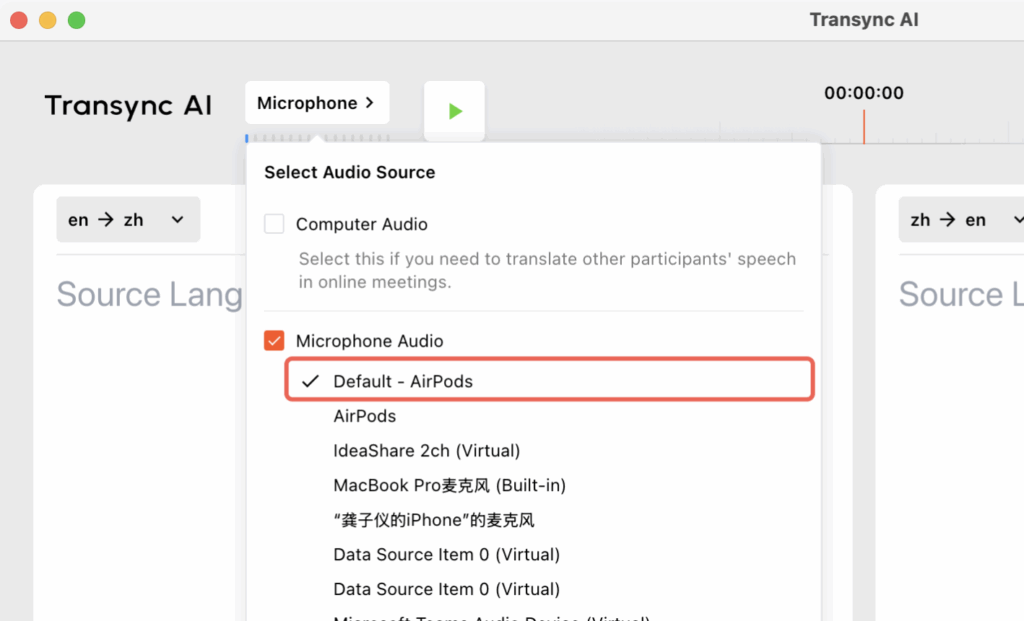
You can download it now and give it a try, https://www.transyncai.com/download/




